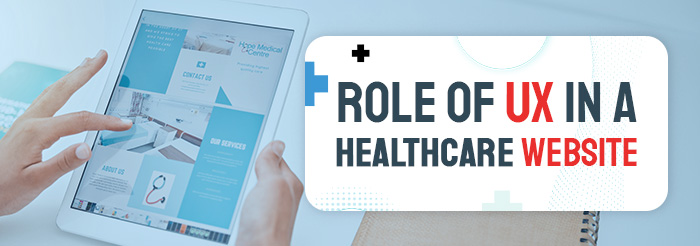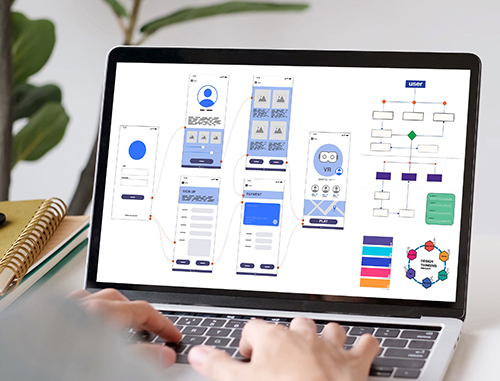Role of UX in A Healthcare Website
Posted on
Within the dynamic healthcare field, where the combination of innovation and patient care determines the industry’s course, technology plays a critical role in improving patient outcomes and overall experiences. One thing that jumps out in the big picture of digital transformation is the growing importance of UX (User Experience) design in the healthcare industry. Practice Builders, a leading healthcare marketing agency, understands the transformative power of incorporating state-of-the-art UX design into the core of healthcare services as healthcare providers navigate the complexity of the modern digital era.
In this blog post, we embark on a comprehensive exploration of UX in healthcare, shedding light on its paramount importance, the challenges it hides, and the future trends that Practice Builders envisions as integral to shaping the future of the healthcare industry.
What is UX Design for Healthcare?
Understanding the importance of UX design in life-related fields is essential before diving into healthcare UX design. UX design transcends aesthetics by placing a strong emphasis on accuracy in content reliability, speed in crucial interactions, and precision in the delivery of medical information.

In the healthcare field, accuracy fosters trust through the trustworthy dissemination of information; speed is essential in situations requiring quick decision-making; and precision guarantees prompt and accurate access to patient data in an emergency. This balance of speed, accuracy, and precision is about more than just designing aesthetically pleasing user interfaces; it’s about developing digital experiences that are essential in the complex and time-sensitive world of healthcare, ultimately leading to better patient outcomes and operational effectiveness.
What role does UX Design play in Healthcare?
The healthcare industry is undergoing a paradigm shift from traditional to digital, and UX design serves as one of the main components of this transformation. Here are the key roles UX design plays in healthcare:
Making patient experience come first
Patient experience must always come first in the complicated world of healthcare; it is not an option. A user-friendly interface that resonates with intuitive navigation and clear information presentation is the first step towards an enhanced patient experience. Through improved appointment scheduling, easy access to medical records, and a clear understanding of treatment plans, an optimized UX design creates a supportive and empowered environment for patients as they navigate the healthcare system. Not only does this emphasis on the user experience increase satisfaction, but it also improves patient engagement and results.

Boost the Accessibility of Healthcare Services
Accessibility lies at the core of the healthcare user experience, ensuring that digital platforms cater to individuals with diverse abilities. Crafting websites and applications with accessibility in mind is not just about ethics; it’s a strategic move that expands the potential user base, fostering a more comprehensive and widespread healthcare ecosystem. By making healthcare services accessible to everyone, UX design plays a pivotal role in breaking down barriers and ensuring that individuals, regardless of their abilities, can navigate and utilize digital healthcare resources seamlessly.
Patient Education Regarding a Product
In the context of modern medicine, UX design plays a more important role in educating patients about wellness and preventive care than it does in curing ailments. UX design acts as a link in the efficient exchange of medical information by simplifying difficult ideas for better understanding. A well-designed user experience (UX) makes sure that patients can access and comprehend crucial information, whether it’s prescription instructions, post-operative care instructions, or lifestyle suggestions. In addition to enabling patients to make knowledgeable decisions about their health, this educational component creates a relationship between healthcare professionals and the people they are caring for.
UX Development and Design: Major Challenges
While the benefits of healthcare UX design are evident, the journey is not without its challenges. Overcoming these obstacles is crucial for creating a seamless and effective user experience in the healthcare digital domain.

Designing for privacy and security concerns, accommodating diverse user demographics, and navigating regulatory compliance are among the major challenges faced by UX designers in healthcare. Striking the right balance between data security and usability is a delicate game, and healthcare UX professionals must navigate these complexities to ensure the integrity and confidentiality of patient information.
The Future of Healthcare UX Design: Main Trends
As we gaze into the future of healthcare UX design, the landscape is not just promising; it’s undergoing a profound transformation driven by robust trends and sharp market growth. According to a comprehensive study by Statista, the global digital health market witnessed remarkable growth. The numbers show an expected Compound Annual Growth Rate (CAGR) of almost 25 percent during the period from 2019 to 2025.
AI (Artificial Intelligence) in Healthcare UX Design
AI is revolutionizing healthcare by offering personalized and predictive solutions. In UX design, AI can enhance user interactions by providing tailored recommendations, automating routine tasks, and even predicting user needs based on historical data. This not only streamlines processes but also contributes to a more proactive and patient-centric healthcare approach.

Chatbots: Enhancing User Engagement
Chatbots are becoming integral to healthcare websites, offering immediate and personalized assistance. Whether it’s answering FAQs, guiding users through symptom checkers, or providing appointment scheduling support, chatbots elevate user engagement. They act as virtual assistants, enhancing the overall user experience by providing real-time assistance and information.
Telehealth: Transforming Remote Healthcare Experiences
The rise of telehealth has been accelerated by global events, and UX design is at the forefront of ensuring seamless virtual healthcare experiences. From user-friendly video consultations to intuitive prescription management interfaces, healthcare UX designers are crafting digital solutions that bridge the gap between patients and healthcare providers in the virtual realm.
VR (Virtual Reality): Redefining Patient Engagement
Virtual reality is transcending the realms of entertainment and finding its place in healthcare UX design. From effective patient education experiences to therapeutic applications, VR has the potential to revolutionize how users interact with healthcare content. This not only enhances patient engagement but also contributes to more effective and memorable learning experiences.
Conclusion
In conclusion, the role of UX design in healthcare is transformative, shaping the way patients, caregivers, and healthcare professionals engage with digital platforms. Prioritizing patient experience, ensuring accessibility, and addressing the unique challenges of the healthcare landscape are crucial for creating effective and user-centric healthcare solutions. As we embrace the future, Practice Builders understands that the integration of AI, chatbots, telehealth, and VR in healthcare UX design promises to usher in a new era of innovation and improved patient outcomes.

 What Are the First Steps When Planning a New Websi..
What Are the First Steps When Planning a New Websi.. SEO Strategies to Rank Your Dental Practice
SEO Strategies to Rank Your Dental Practice How AI is Driving Patient Engagement and Revolutio..
How AI is Driving Patient Engagement and Revolutio..